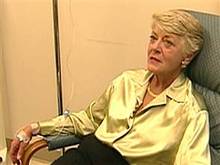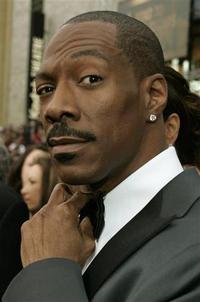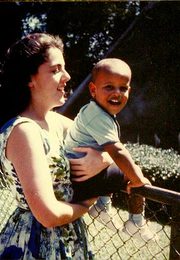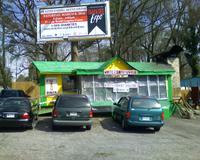Northern racism is different from southern racism.
Northern racism is economic in origin. Southern racism is cultural in origin.
Not that this matters to the victim. Racism is racism.
I grew up in Massapequa, on Long Island. Many of my neighbors were refugees from what would become Geraldine Ferraro’s Congressional district.
In my day Massapequa was all-white. I never thought about this until I met a new friend in junior high school.
His parents had first abandoned New York for Roosevelt, a few miles
northwest of us. Roosevelt is now known as Eddie Murphy‘s hometown. And
it was then.
Yet when the Murphys (and others) bought into Roosevelt, real estate
agents began "blockbusting." They bought out the most racist whites at
rising prices, then used the fear of black takeover to flip the whole
town, driving prices to the floor.
As a result my new friend hated black people. He resented what
"they" had done to his family. He resented his smaller house, its
poorer location. He resented all the things he didn’t get because their
mortgage payment was higher than ours.
A year or so later a black family tried to move into Massapequa. It
was the first time a KKK cross was burned onto a lawn in the history of
Long Island. That family stayed, but others got the message.
Regardless whether racism is economic or cultural in origin, it
poisons everyone it touches, white or black, young or old. I got a
bargain when I moved into my East Atlanta neighborhood in the early
1980s. We were the first white couple to move in since 1965 — the
whole block was abandoned within months of the Open Housing Act going
into effect.
I only learned how lucky I was over the ensuing decades. My fortune
wasn’t economic, it was cultural. I met men and women of immense
character. One had worked the same job for 60 years. Another founded
the local NAACP, when racism kept him from a job my own father
rejected. Another performed the miracle of the loaves and fishes, for
real. And another lived like Jesus, a carpenter as well as a pastor,
smiling through the worst blows imaginable, even risking his life to
clear my roof-line during an ice storm while we were on vacation. Many
others as well.
What they taught me are the great lessons of my life. They were many
decades older than I was, and each one’s passing leaves a great void
inside me I can only try to fill with kindness toward my newer
neighbors.
Racism is a personal thing. It can’t be cured through law. It can only be cured on a personal basis.
Stanley Ann Dunham (right) grew up, in the 1950s, believing in a world
beyond racism. She married an African exchange student and had his
child, knowing the risks. It was the racism of the father’s family that split
them up — he wanted to maintain his political viability in Kenya.
Her son was
left with only dreams of his father. His real father figures coming up were
an Indonesian step-father and a white grandfather, a man much like my
own dad, a salesman who failed to become a millionaire, and who learned
the same lessons from his grandson I learned from my neighbors.
These are hard lessons. You live in an "ethnic" enclave, as Chris
Matthews describes the tribes of Pennsylvania, and you will never learn
them. Ethnic, in this case, becomes an excuse for racism. Ignorance is
its own excuse. Matthews assumes, as Geraldine Ferraro assumes, that racism
is inevitable, that it’s as natural as breathing.
Fact is, it is. It is so easy to demonize "the other," to see the
differences instead of the similarities. Blending races was once called
miscegenation, and it was a crime.
Stanley Ann’s son is half-white, yet Barack Obama always identifies
himself as a black man. Just as Tiger Woods, who is half-Thai,
one-eighth white, one-eighth American Indian, and just one-quarter
black, identifies himself as a black man. Back in the 20th century
Louisiana had a law defining anyone so much as 1/32nd black as entirely
black by race, and upper-class blacks used a "paper bag" test to see
who might pass for white. Eventually, geneticists figured out nearly everyone in
the state of Louisiana was, by the state’s own definition, black. But
this was many years after the law had been repealed.
The heart wants what it wants. In our minds we all dream of an
America cleansed of racism. But instead we find new races to resent —
Mexicans who are mostly American Indian, Asians and Arabs who come from
many places. We create new categories of racism faster than the old
ones can be stamped out, because the mind works faster than the heart.
The better angels of our nature are those which see beyond race,
which search for the heart beneath. Scientists now know there is no
specific gene defining race at all, that the secret to skin color and
the differences in our features must lie in the interstices between
genes, in realms we still haven’t discovered yet.
But even that answer won’t get us to the heart of racism. It was a
raging disease in this country from the start. It’s as American as ADHD.
It continues to fester, to hold us back.
And it’s something we need to fight again, and again and again. Not just in our politics, but in our daily lives.
I need to fight it as much as you do.
Want to really fight racism? Go to a church run by people of a
different color. Or just do what I did this week, and go shopping.
There’s a little shack a few miles from my home which I’ve checked
out from the corner of my eye ever since I moved here. Yet I never went
in, until this week.
It’s called Wyatt’s Barbecue. You walk up a ramp, step inside a
screen door, and find yourself in a short hallway, covered with kitchen tile, with a high counter and
two black ladies taking orders behind it. The menu is a typed sheet you
have to ask for, it’s not posted. On it, I found what was called a
"Pork Rib Sandwich." Sounded nice so I ordered one to go (there’s no
other way to get it, although there are a few cement tables outside
where regulars smoke cigarettes and tell each other lies all day under
the haze of wood smoke).
What I got, for $7, were four of the biggest, meatiest, and tastiest
ribs I have ever eaten, and two slices of white bread. The lunch ladies
were gracious throughout. I joked with a fellow customer, a black guy
who looked 50 to me but from his statements and actions was either in
his 70s or imagined himself to be.
I felt a frisson of fear as I stepped into the place, nothing but
sunshine and radiance as I stepped outside. Just one more battle out of
many for me. One more victory, my prize a super lunch.
That’s how you fight racism. You face your own fears, you seek friendship where
your heart knows only fear. It’s a battle anyone, of every race, can
fight, and a battle we all must win to make America what it is supposed
to be.
I can’t promise you a great pork rib sandwich, but fight the battle and you’ll feel the sunshine.














One of Robert Heinlein’s characters, so many years ago it was like another world, remarked that if the South ever decided to disenfranchise anyone who was black under their own laws, there wouldn’t be enough white voters left in the state to pass the referendum. One again, science fiction writers with common sense saw then what geneticists saw later.
Very good column! I spent my early childhood in Connecticut in the 1940s and never saw a darker skinned person. We moved to Indianapolis where they were everywhere and talked of like – well, like the underclass they were relegated to. Adults called by their first names indeed! (At 10 you are pretty conservative) etc – one real good cure for racism if you’re young enough or deliberate about it is to change regions often. The changing faces thereof should knock the unthinking part out of you real fast. Another way, of course, is to be a time traveler.
(Signed, the Woman from 1939)
One of Robert Heinlein’s characters, so many years ago it was like another world, remarked that if the South ever decided to disenfranchise anyone who was black under their own laws, there wouldn’t be enough white voters left in the state to pass the referendum. One again, science fiction writers with common sense saw then what geneticists saw later.
Very good column! I spent my early childhood in Connecticut in the 1940s and never saw a darker skinned person. We moved to Indianapolis where they were everywhere and talked of like – well, like the underclass they were relegated to. Adults called by their first names indeed! (At 10 you are pretty conservative) etc – one real good cure for racism if you’re young enough or deliberate about it is to change regions often. The changing faces thereof should knock the unthinking part out of you real fast. Another way, of course, is to be a time traveler.
(Signed, the Woman from 1939)